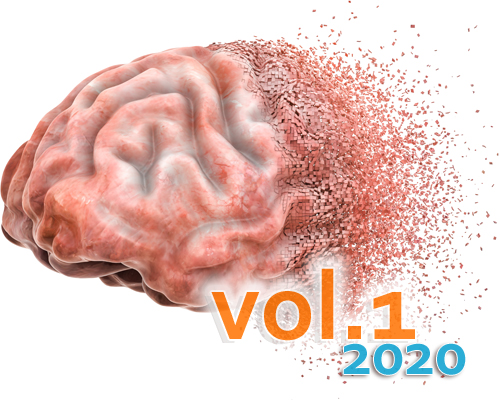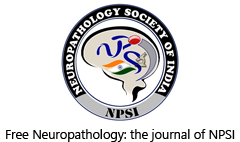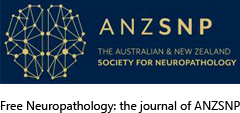Deposits of disease-associated alpha-synuclein may be present in the dura mater in Lewy body disorders: implications for potential inadvertent transmission by surgery
DOI:
https://doi.org/10.17879/freeneuropathology-2020-2616Keywords:
Alpha-synuclein, Dura mater, Lymphatic drainage, Prion, Propagation, TransmissionAbstract
Deposition of alpha-synuclein in the brain is a hallmark of Lewy body disorders. Alpha-synuclein has been considered to show prion-like properties. Prion diseases can be transmitted by the transplantation of cadaveric dura mater causing iatrogenic Creutzfeldt-Jakob disease. Recent observations of amyloid-β deposition in dural grafts support the seeding properties of amyloid-β. Here we assessed the presence of alpha-synuclein in dura mater samples as a potential transmissible seed source. We immunostained 32 postmortem dura mater samples; 16 cases with Lewy-body disorder (LBD) showing different pathology stages and 16 non-LBD cases for phosphorylated (Ser129) and disease-associated (5G4) alpha-synuclein. Disease-associated alpha-synuclein aggregates were identified in intradural nerve fibres and associated with a vessel in a single LBD-Braak stage 4 case. We conclude that alpha-synuclein is detectable, although rarely, in dura mater samples in patients with LBD. The risk of potential transmissibility of dural alpha-synuclein deserves assessment by complementary experimental studies.
Metrics
Published
How to Cite
Issue
Section
License
Papers are published open access under the Creative Commons BY 4.0 license. This license lets others distribute, remix, adapt, and build upon your work, even commercially, as long as they credit you for the original creation. Data included in the article are made available under the CC0 1.0 Public Domain Dedication waiver, unless otherwise stated, meaning that all copyrights are waived.



















